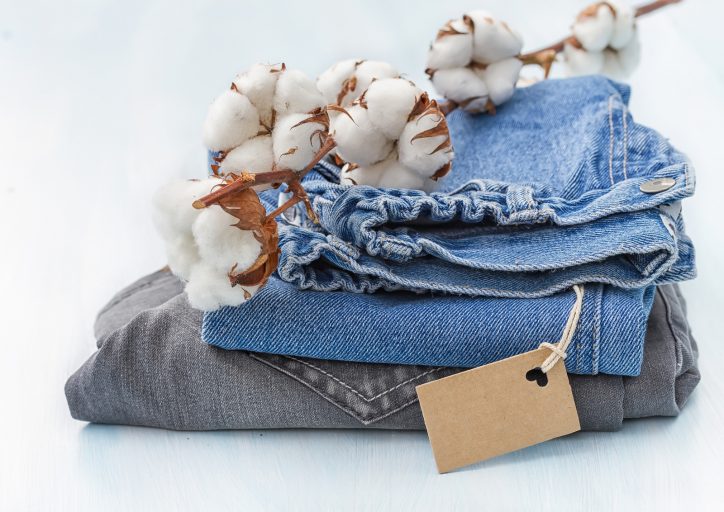When I say “cotton”, most of you will think of blue jeans.

Ubiquitous, comfortable, sturdy but sexy, these garments have remained true to their 18th century origins – all cotton, all blue, all the time.
The name of the cloth may come from a French town, but the product itself is as American as apple pie. Invented for California gold miners, these tear-and-puncture resistant ‘waist overalls’ have the advantage of copper rivets to keep the pockets from tearing away.
The inventor was Levi Strauss. The cotton came primarily from America’s Southern plantations. That has changed. Today, some of the world’s finest cotton comes from Arizona. Developed in the early 1900s, this ELS (extra-long staple, American-Egyptian) cotton was named after the Pima, a Native American tribe that grew the experimental cotton for the US Department of Agriculture, or USDA, in Sacaton, Arizona.
As of December 2014, cotton was again Arizona’s leading export, with fresh vegetables running a close second. Some other interesting facts about cotton include:
- Improved seed varieties have decreased pesticide use to almost zero, so wear your “blues” with pride.
- Not all cotton is white. In Peru, the Mochica tribe grows bolls ranging in color from deep chocolate to mauve and even purple, and protects the secrets of colored cotton almost religiously.
- Cotton is accused of being “a thirsty crop”. From boll to closet, a simple t-shirt reportedly uses 713 gallons. However, modern farming techniques can (and do) reduce that to 284, and improve yields by about 30 percent.
- Arizona cotton farms produce enough top-grade cotton to make one pair of jeans for every single American, including the littlest ones.
- Cotton is the world’s largest non-food crop. Cottonseed oil is used to make cooking oil and margarine, and in cosmetics. It is also high in antioxidants like Vitamin E.
- Cotton fiber is the “background” for such diverse fabrics such as velvet, corduroy, and flannel.
- Cotton sheets and pillowcases are currently graded by thread count, which is a marketing lie. The best sheets are made from ELS, or pima cotton, and woven via the “percale” method. (Yes, that is where the word comes from).
- Cotton goes a long way. One bale (500 pounds, or as heavy as a grizzly bear) can make 215 pairs of blue jeans, 680,000 cotton balls, or 6.5 million cotton swabs.
- Cotton has been cultivated in Egypt for centuries. At one time, only the High Priest was allowed to wear it.
- Thomas A. Edison’s first light bulb filament was made from cotton.
- Cotton makes up about 40 percent of the world’s fiber production.
- Cotton also makes up 75 percent of the U.S. “greenback”, or folding money. The rest is linen. No paper is involved in making “paper currency”.
- Cotton can be made wrinkle-resistant by adding a chemical finish, or by layering individual fibers (which then act as support for one another when folding or putting weight on them).
- Cotton exports put the U.S. at number 1!
- Cotton, as clothing fabric, has been around for 3,000 years; cotton farming has been around for 5,000.
Cotton, dubbed “The Fabric of Our Lives” by an advertising campaign, certainly lives up to its billing, doesn’t it?
Related articles
- Arizona Cotton Harvest as Experienced by Jan D’Atri (fillyourplate.org)
- It’s High Cotton but High Costs (fillyourplate.org)
- Cotton Pickin’ Fun on the Farm- Cotton Crafting (fillyourplate.org)


One Response to Fun Facts about Cotton